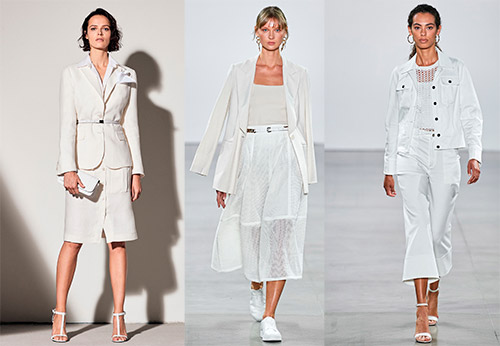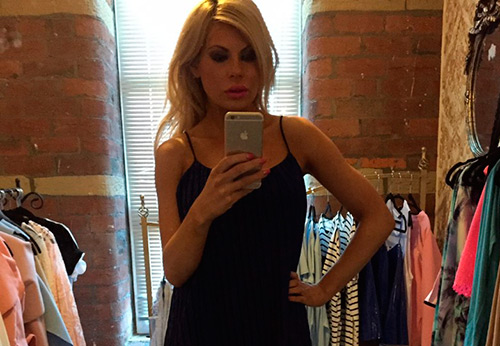NEEDLEWORK
Embroidery white surface as a decoration of clothes
White-on-white embroidery has become widespread in many countries. In the second half of the 19th century, this surface was famous in Great Britain, France, Belgium, Germany, Switzerland. In the language of folk symbols in many countries, color in clothing, as well as in embroidery, plays a major role. For example, white color in Russia has long been associated with the idea of light, of heaven. The perception of white was combined with the meaning of happiness, abundance, purity, innocence and beauty.
Msterskaya smooth surface
Mstera surface originated in the village of Mstera in the Vladimir province in the middle of the 19th century. It is distinguished by its sophistication and miniature floral patterns with white threads on a thin white cotton fabric such as marquise and cambric. The main technique of this embroidery is a double-sided satin stitch, which is performed with stitches closely adjacent to each other, positioning them according to the shape of the motif on the front and back of the fabric. Usually it is performed with a thin needle with a floss thread in 1-2 additions. In the figure, where the bulge is required, the flooring is made from the same threads.
The smooth surface combines various embossed elements with and without flooring, with strokes, loops and half-loops, and a stalk seam. The patterns are complemented by openwork lattices, ties, holes, knots and nets. All this creates a decorative embroidery in one color. Larger petals are embroidered in bulk.
In the white surface, there are motifs made with holes and slotted surface. Holes are obtained by puncturing with a special bone, wooden or metal stick with a pointed end. If the holes are large, they are made with scissors, cutting the fabric in the future hole vertically and horizontally on both sides (slotted surface). Leaves of an elongated shape are sometimes also performed with a slotted surface.
"Banners" are one of the most decorative elements of the white Mstera smooth surface, albeit time consuming. "Banners" are performed on thin fabrics with plain weave. The needle pulls together a square of fabric, in which, for example, three warp threads are intertwined with three weft threads. Before pulling on a thick fabric, cut one or two of the warp and weft threads at the edge of the pattern and pull them out. Sometimes Mstera smoothness is beautifully combined with hemstitching.
Blouses, collars, handkerchiefs, nightdresses, bedclothes, bedspreads, and of course, dresses for women and children.

English white smooth also belongs to about the same kind of embroidery, but here all the same, holes and scallops predominate. Almost all motifs are twigs with leaves in the form of holes, trimmed around with a satin stitch. This surface is called - English white work - "whitework" or "Broderie Anglaise" - "English embroidery". This embroidery was extremely popular in England in the 19th century, although it is believed to have originated in the 16th century in Eastern Europe.
Embroidery patterns represent flowers, leaves, vines, stems made with simple embroidery stitches. These are mainly small drawings. The holes are made in the same ways as in the Mstyra smooth surface, but in some cases, the patterns are first embroidered on the fabric, and then the holes are cut out with scissors.
From the 1870s, Broderie Anglaise began to be made on a Swiss embroidery machine. Today Broderie Anglaise is created mostly by machine.
Once upon a time, Broderie Anglaise was popular for women's underwear and children's wear. From the mid-50s of the twentieth century, English embroidery began to be used not only for finishing underwear, but also in women's dresses.
Today, both Mstera smooth and English embroidery are popular in many styles of clothing and complement each other perfectly.
Light silk dresses with narrow spaghetti straps, reminiscent of combinations, or white dresses with the most uncomplicated cut, are decorated with beautiful decorative embroidery. Ruffles, embroidered to match the color of the fabric, sometimes serve as decoration. Most often these are white, beige and other pastel colors, but the black color is not canceled.

Author of the work and photos - Svetlana Tarasova



Tell friends:
Comments and Reviews
Add a comment
Rating news
Shades of clothing that make women look younger
What shades of hair make women younger: rules and photos
Funny wedding dresses - photos and ideas
12 most expensive down jackets for the winter
How to look 25 at 40: tips from supermodels
Beautiful schoolgirls
Anti-aging haircuts and hairstyles for women
Fashionable skirts for autumn and winter
Fashionable women's trousers for the cold season
Fashionable and stylish sandals for summer 2020
Spring-summer 2021
 Fashionable dresses and tops with thin spaghetti straps
Fashionable dresses and tops with thin spaghetti straps
 Bandana tops: how to wear stylishly and beautifully
Bandana tops: how to wear stylishly and beautifully
 How to put together the perfect men's wardrobe for the summer
How to put together the perfect men's wardrobe for the summer
 Fashionable shorts for spring-summer 2021
Fashionable shorts for spring-summer 2021
 Fashionable skirts for spring-summer 2021: a guide to online shopping
Fashionable skirts for spring-summer 2021: a guide to online shopping
 The most fashionable dresses spring-summer 2021: styles and colors
The most fashionable dresses spring-summer 2021: styles and colors
 Fashionable total look 2021: ideas of images and trends
Fashionable total look 2021: ideas of images and trends







